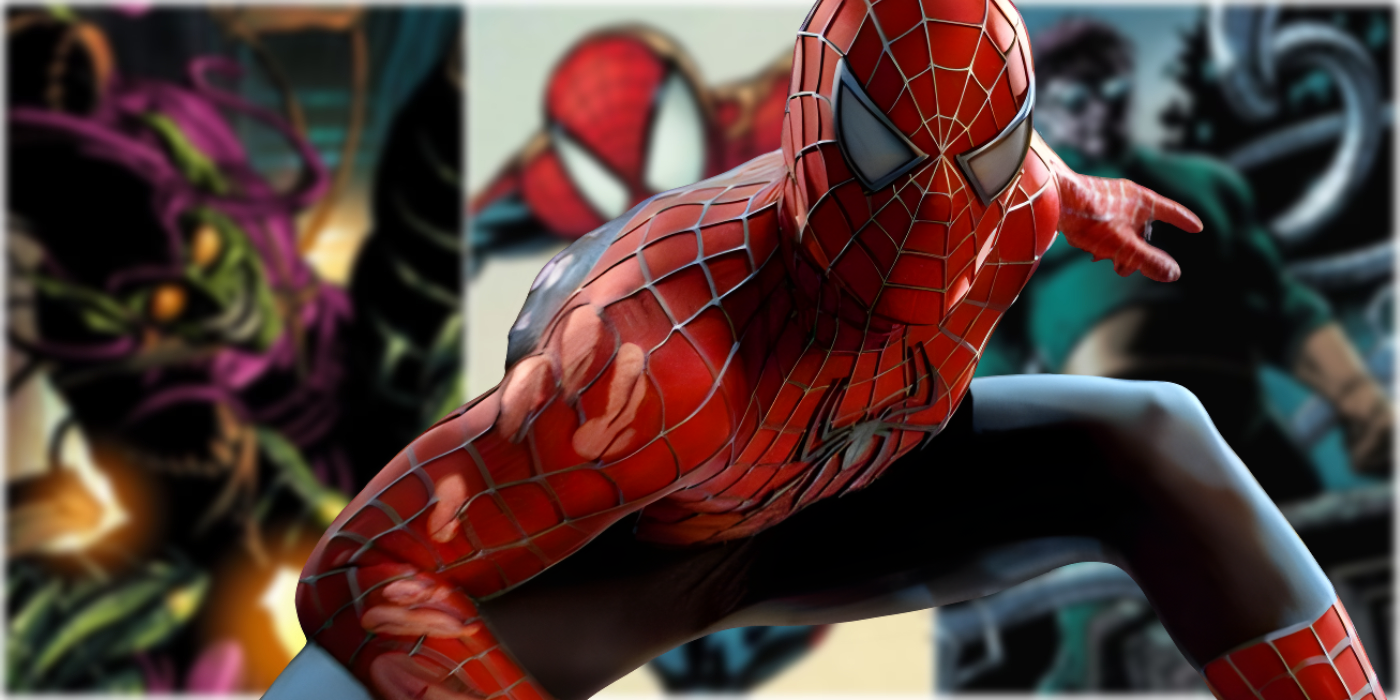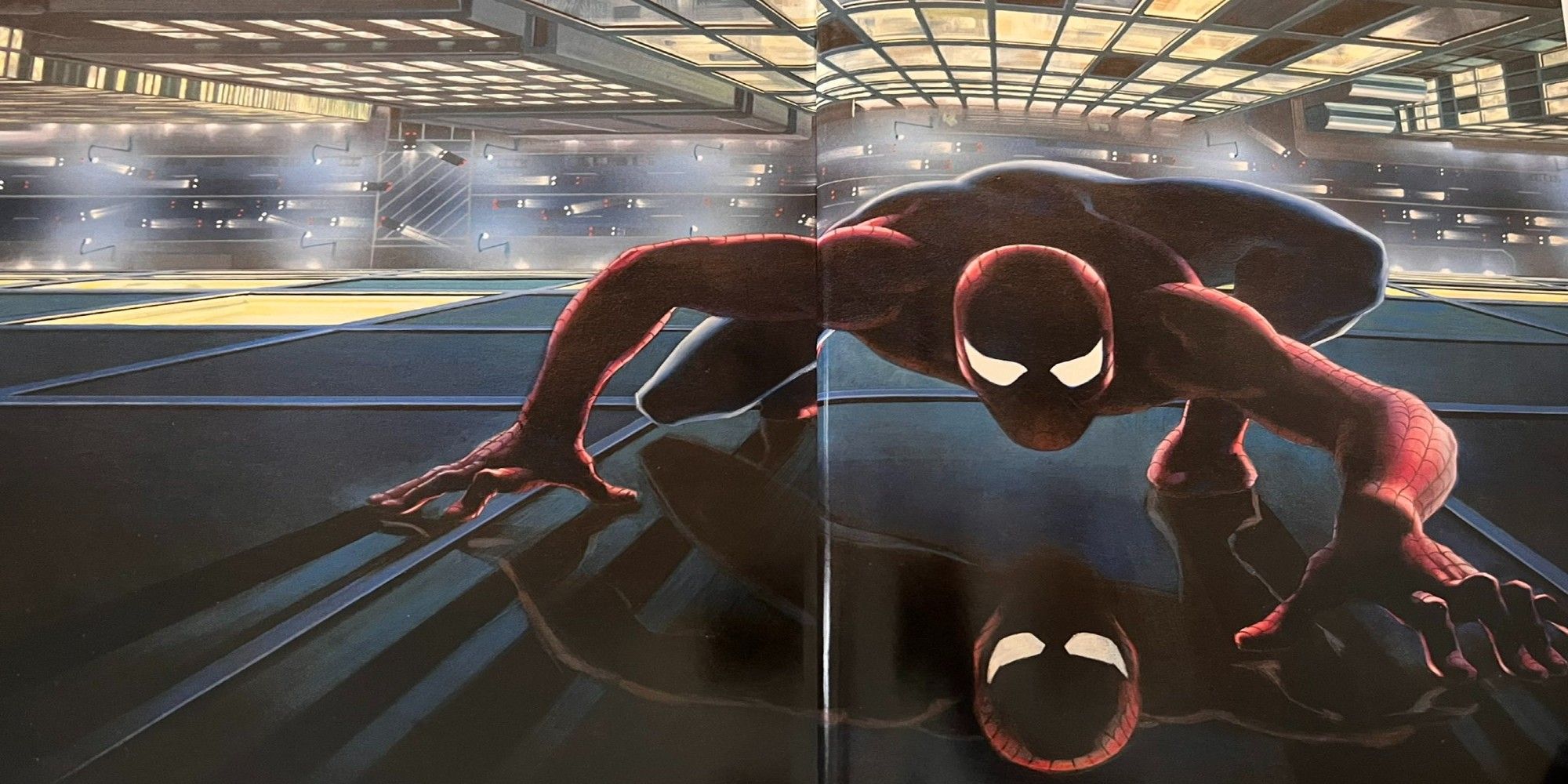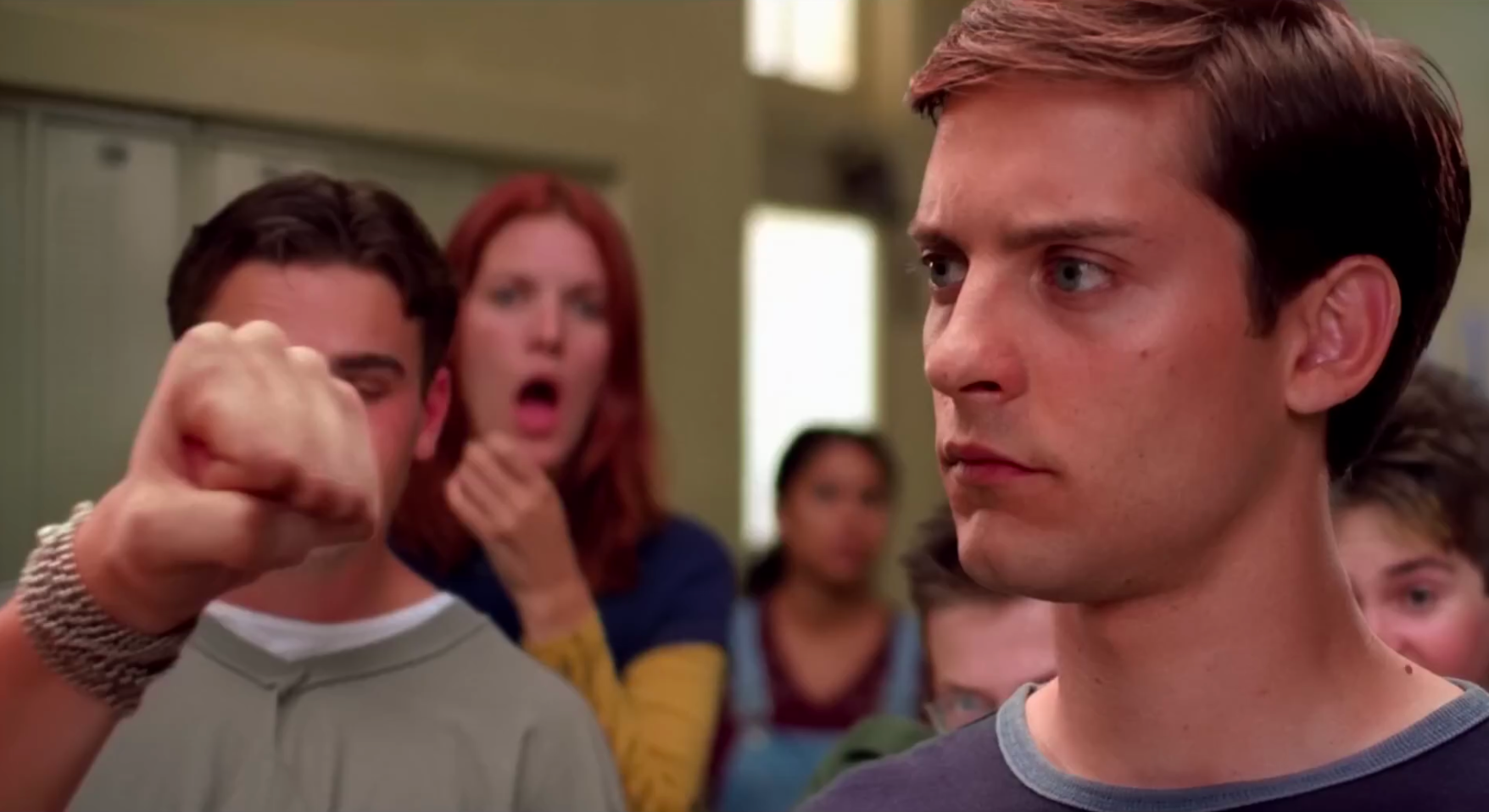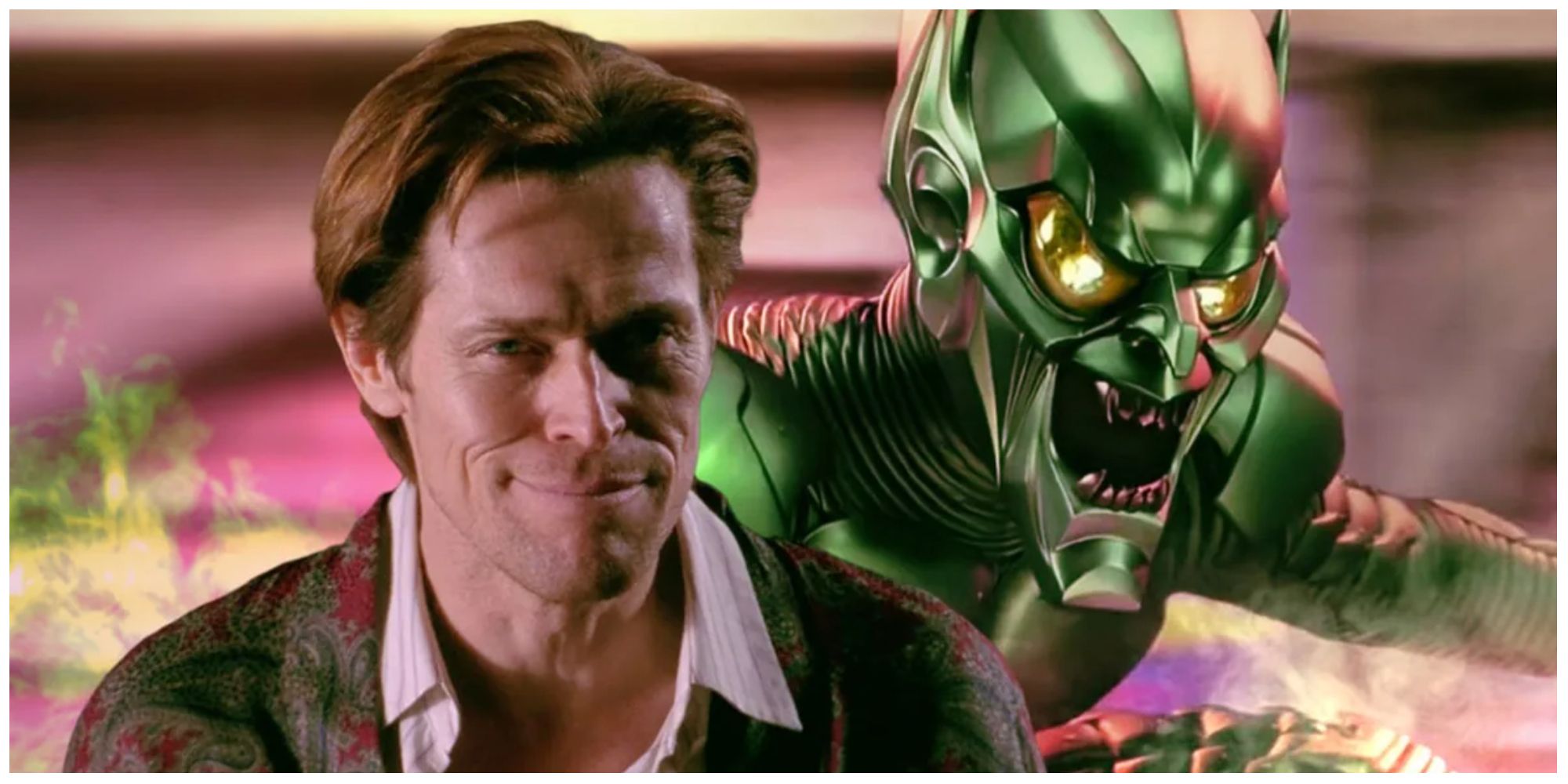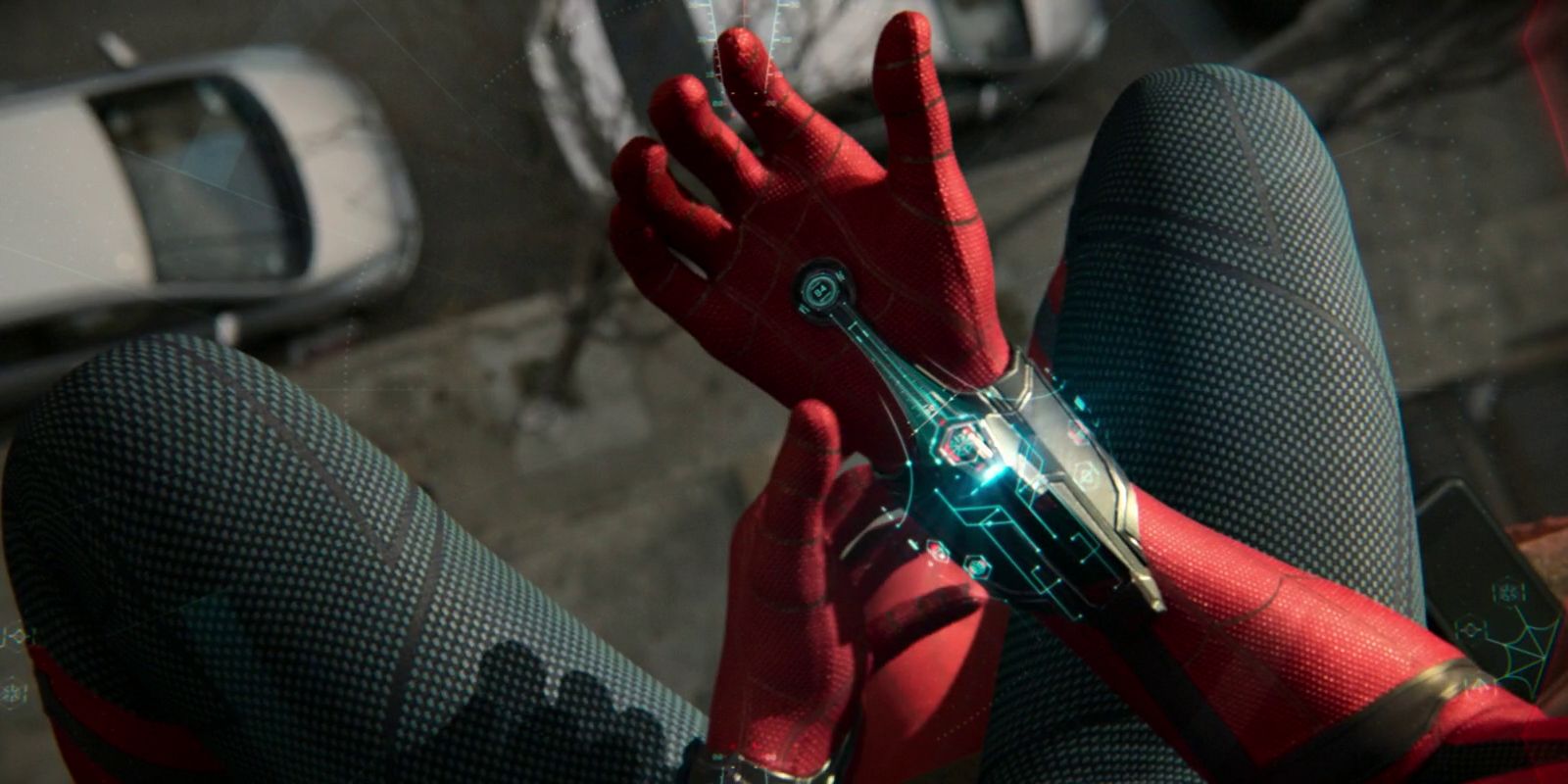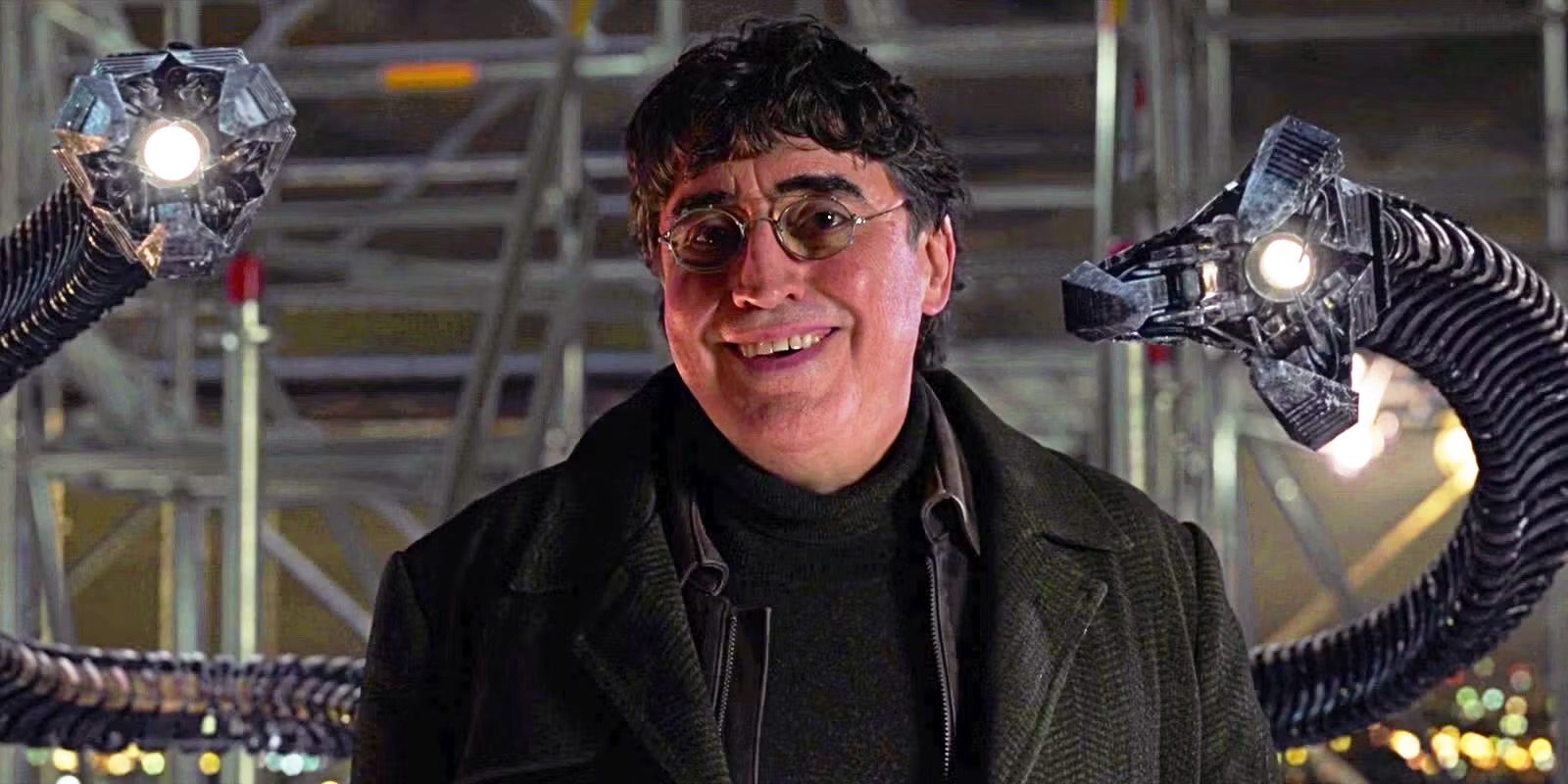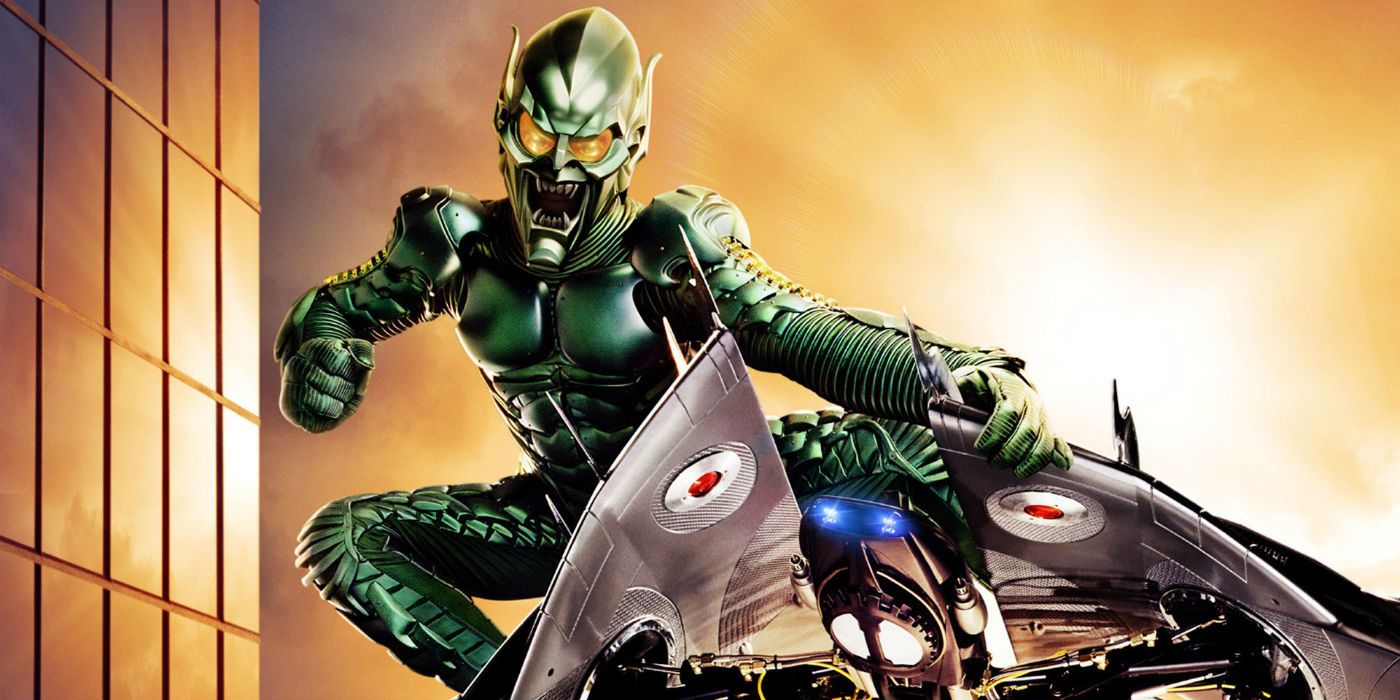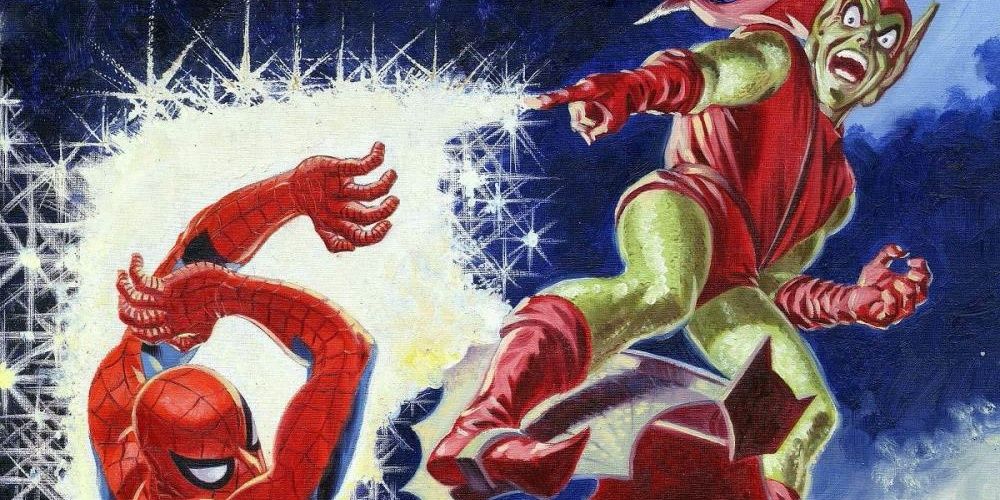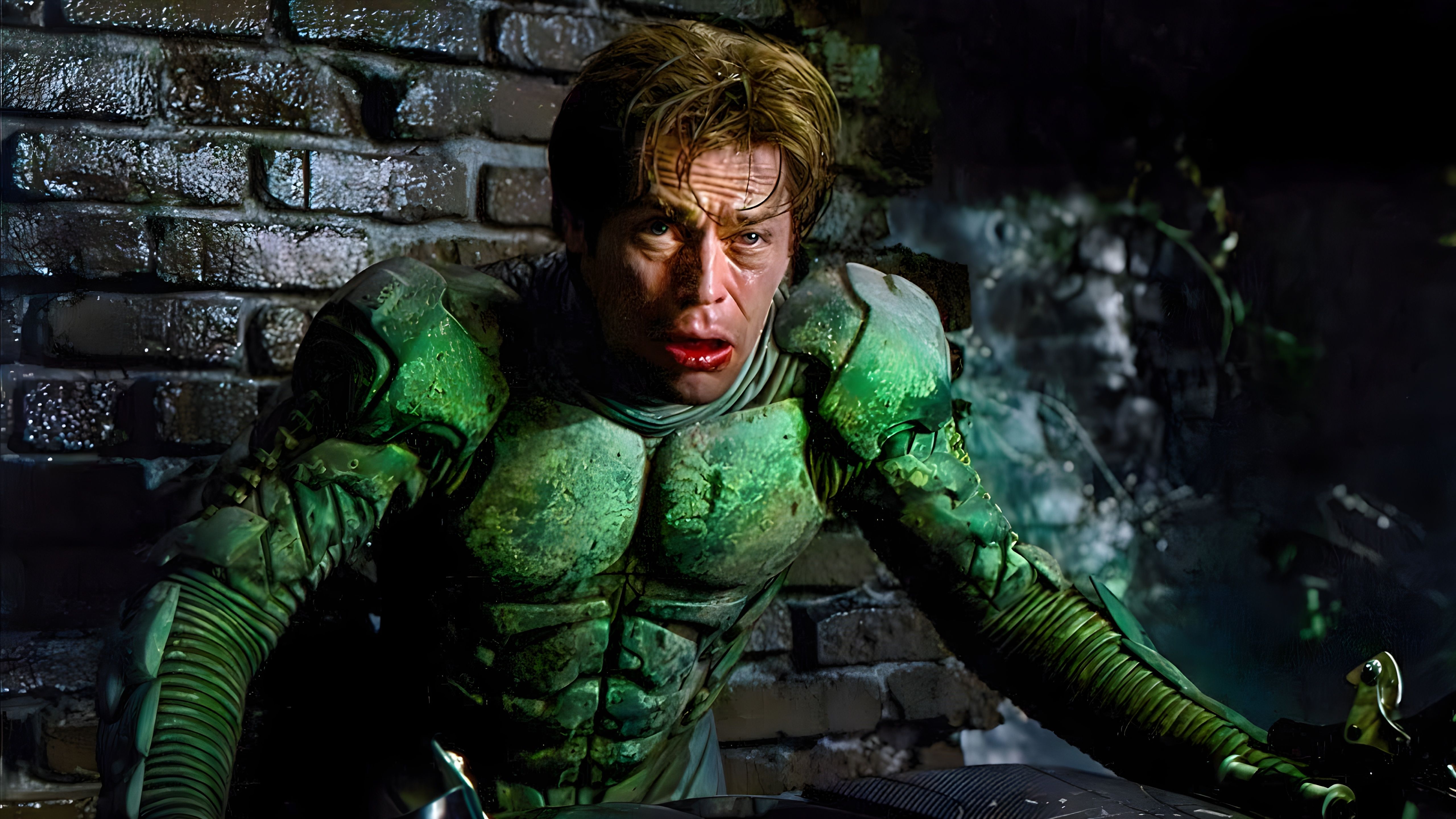Summary
- The journey of Spider-Man to the big screen was filled with legal battles and multiple director changes throughout the 1980s and 1990s.
- Early rumors discussed Jim Carrey playing Spider-Man, inspired by his lanky frame and wisecracking abilities. Dr. Octopus appeared in an early draft.
- David Koepp's 2000 screenplay draft for 2002's Spider-Man featured a more grounded and realistic portrayal of the characters compared to the final film directed by Sam Raimi.
Welcome to the 33rd installment of Page One Rewrite, where I examine genre screenplays that just couldn't make it…or ones that did, but with major revisions. This week, the earliest efforts at crafting 2002's Spider-Man, before Sam Raimi and Tobey Maquire came onboard. And if you have any suggestions for the future, let me hear them. Just contact me on Twitter.
The journey of Spider-Man to the big screen wasn't easy, with numerous directors coming and going throughout the 1980s, and the 1990s bringing a protracted legal drama concerning which movie studio even had the rights to the character. (Heck, even earlier than this, all the way back in 1975, shlock master Roger Corman was the first to hold the option and was developing the film at Orion Pictures.) In 1999, a judge ruled that Sony's Columbia Pictures were the legal rights holders, and development on the eventual Spider-Man film kicked off immediately.
Early rumors didn't indicate an adaptation of Peter Parker's teenage years, however. The character hadn't been portrayed as a teen since the early 1970s in the comic, and wasn't played as a high school kid in the '90s animated series or concurrent newspaper strip. The early buzz around the film had Jim Carrey possibly playing Spider-Man, a choice inspired by his lanky frame and ability to deliver wisecracks worthy of the web-slinger.
The Infamous James Cameron "Scriptment"
Before the legal wrangling, most of the 1990s were spent with the assumption that blockbuster filmmaker James Cameron would write and direct the movie. Cameron's extended treatment was a tribute to his memories of the earliest Amazing Spider-Man comics, starring a frustrated, adolescent Peter Parker. Although Cameron opted out of returning to the project (citing a desire to only work on his original concepts, following the success of Titanic), a decision was made early in development to draw inspiration from Cameron's "scriptment." This meant junking any talk of an adult Spider-Man and returning to the teenage Peter Parker of the Stan Lee/Steve Ditko Amazing Spider-Man comics.
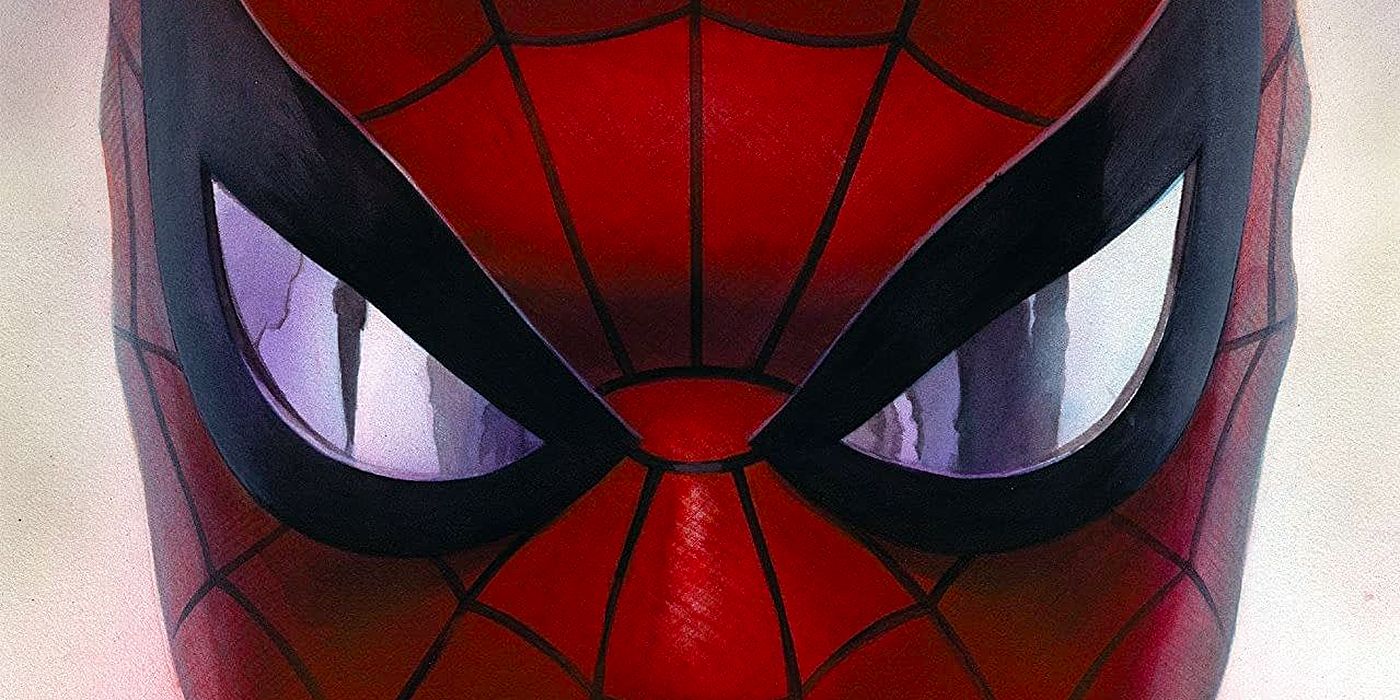
Spider-Man's First Film Treatment Was Influenced by Frank Miller, Oddly Enough
Jim Shooter's Spider-Man treatment gave the hero someone else's enemies, and a love interest creeped out by his relationship with Aunt May.Jurassic Park writer David Koepp was tasked with the first draft, which credits Lee and Ditko as the creators and James Cameron as the writer of the original treatment. The completed film actually doesn't give Cameron a story credit, even though it roughly follows his treatment and even includes a scene not present in this draft that's taken directly from Cameron's work.
So is Koepp's April 14th, 2000 first draft a radical departure from the 2002 film? Yes and no. The fundamentals are the same, up until a certain someone is introduced deep into the script, and it's clear that Koepp's nailed the big picture even at this stage. What is noticeably different would be the portrayals of the cast, which are more grounded in reality and far less "comic book" than Raimi's film. Virtually every line of Koepp's dialogue was scrapped when new writers were brought in, giving the 2000 screenplay a noticeably different feel.
Koepp's Early Blueprint for 2002's Spider-Man
For the first two acts, the events play out in a familiar fashion. On a field trip, high school kids Peter Parker, Harry Osborn, and Mary Jane Watson visit a Columbia University genetics laboratory. Peter's bitten by a genetically engineered spider, and the next day discovers he has strange new powers. He soon gets into a fight at school with bully Flash Thompson, and considers making money as an amateur wrestler. The show's promoter cheats Peter out of his earnings, only seconds before an armed thief emerges to rob the man. Peter ignores his Uncle Ben's admonition that "with great power comes great responsibility" as he stands idly by and allows the criminal to run past.
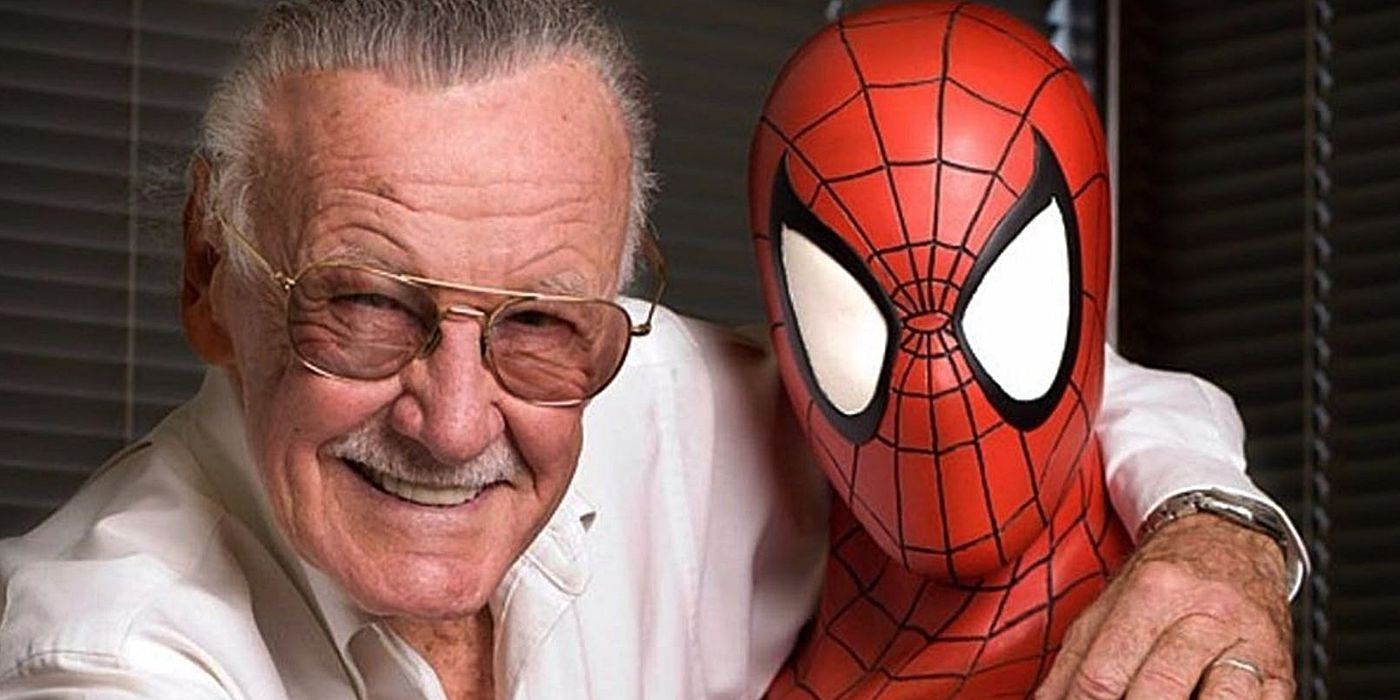
Did Spider-Man Lose His Virginity In Stan Lee's Film Pitch?
Before Raimi's film success, Stan Lee wrote a script treatment for a Spider-Man movie that was incredibly comics faithful...with some odd exceptions.Back outside, the criminal kills Uncle Ben in a carjacking, and a distraught Peter apprehends him hours later, completing his journey of truly becoming Spider-Man. After graduating from high school, Peter and Harry live as roommates in Manhattan, MJ makes a sad attempt at an acting career, Peter makes cash selling Spider-Man photos to the Daily Bugle, and Harry's father Norman becomes the villainous Green Goblin after an accident at OsCorp. The scoundrel even terrorizes Peter's Aunt May one evening as she says her nightly prayers.
So, clearly, much of the 2002 film is already here. But the tone feels different, and there are several moments that didn't make it into the movie. Instead of a quick scene that establishes Peter as an anonymous nerd and MJ as a goodhearted girl-next door, the 2000 screenplay opens at the Columbia exhibit…an alley nearby, at least. It's a brutal beatdown via Flash and two other jocks in an alley. This is Peter's punishment for speaking to Flash's girl, MJ. Even during the beating, Peter cracks jokes and makes Flash's buddies laugh.
MJ appears (described in this pre-Me Too era as "seventeen, painfully sexy already, with a knowledge and sadness in her eyes that are way beyond her years"), castigating Flash for picking on a "helpless little dweeb." After dumping a trash can over Peter's head, Flash and his thugs depart. Peter thanks MJ, who doesn't understand why he's acting so familiar with her. He tries to explain that they've grown up next door to each other, but MJ has no idea what he's talking about. MJ does call Peter "Tiger," though, after advising him to stay away from her, and wiping blood from his lip. (The only "Tiger" in the actual film is an improvised line from Kirsten Dunst.)
Was Norman Osborn Always "Something of a Scientist?"
Harry and Norman are in a limo outside the Columbia demonstration. "Harry has already inherited a lot from his father -- a receding hairline, some disquieting facial tics, and, presumably, a fortune," we're told. Harry wants Norman to talk about his problems. Instead, Norman insults Harry for getting kicked out of several private academies and ending up in public school. And since Peter and Norman don't meet here in this draft, we're deprived of the thirty thousand "I'm something of a scientist myself" memes that exist today.
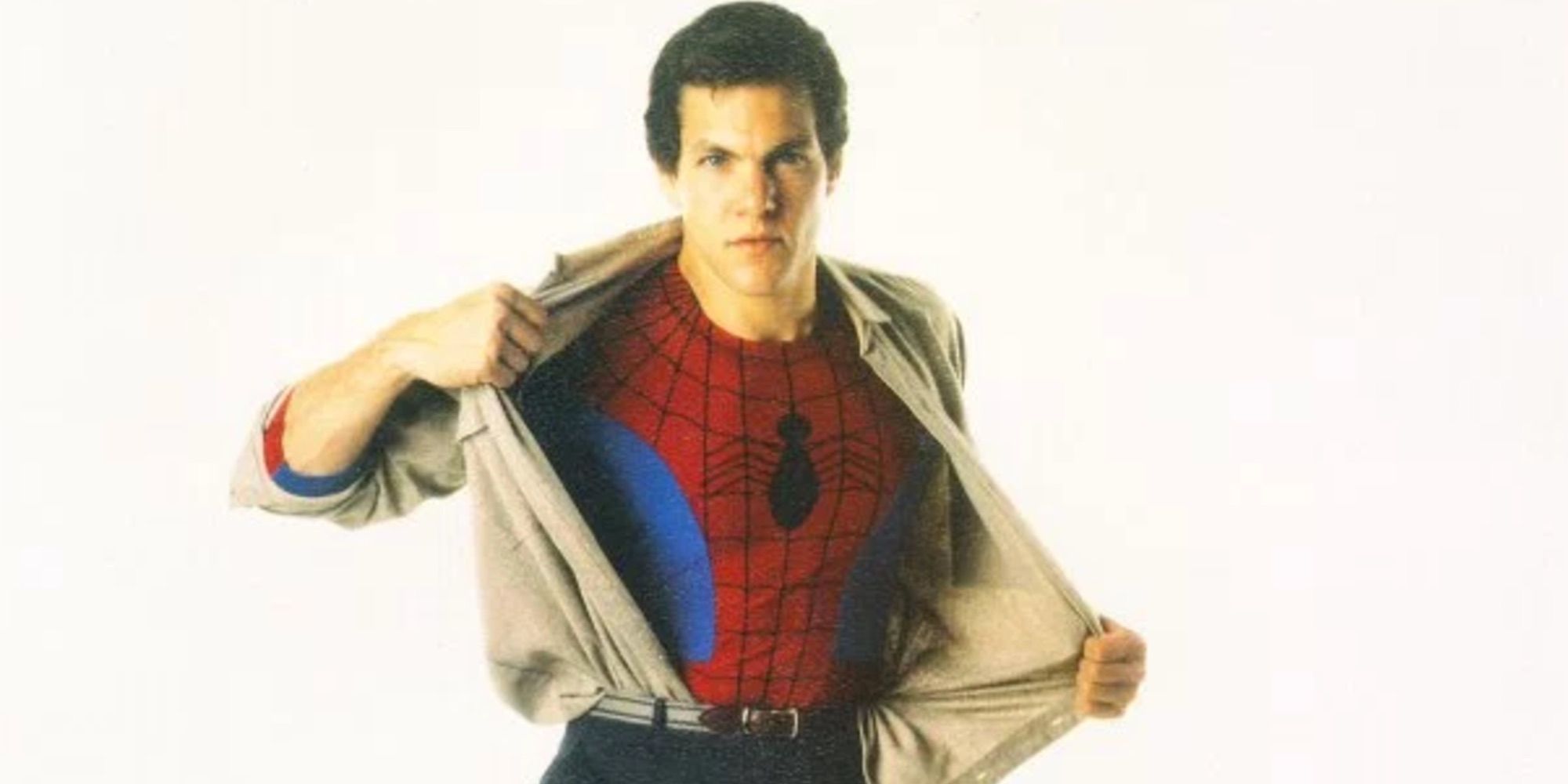
Is the '80s Spider-Man Film a Lost Classic?
The Cannon Films version of Spidey would've featured a gritty New York, breakdancing, and a WWF Superstar.Koepp deserves some credit for doing research and determining the specific spiders used in creating Spider-Man -- a Salticus jumping spider, with the "proportionate muscle strength vastly greater than that of a human being," a funnel web spider that "spins an intricate, funnel-shaped web whose strands have a tensile strength proportionately equal to the type of high-tension wire used in bridge building," and the web-less crab spider, which hunts with "a set of reflexes with nerve conduction velocities so fast some researchers believe it almost borders on precognition, an early awareness of danger." Their DNA was merged in Columbia's "Recombination Lab," which evokes memories of the Neogenic Recombinator from the '90s Spider-Man cartoon.
One memorable moment from the Cameron treatment reappears in the draft, as the newly-empowered Peter falls asleep in his bed and awakes with a sticky white mass all over his body and sheets. This not-so-subtle puberty metaphor is of course the birth of the movie's controversial organic webshooters, even though this scene never made the cut.
Peter's more sympathetic in the days leading up to the wrestling match in this version. His motivation for making money in the ring is to help Uncle Ben (who's been laid off) and Aunt May (who's chronically ill), instead of buying a car to impress MJ. And two of Ben and May's memorable lines from the 2002 film show up earlier here.
Days before the wrestling match, Ben lectures Peter about power and responsibility in the context of knowledge is power, and Peter's the smartest kid in school...so he shouldn't be wasting time getting into fights with people like Flash. Unless the audience is meant to think Ben suspects Peter's secret, it really doesn't make sense within the context of the 2002 film for Ben to blurt this out, so Koepp's draft deserves credit for weaving it in much less awkwardly. May's "You're not Superman, you know" line also comes much earlier, when Peter moves out. This specific wording might be the only Koepp dialogue left unchanged after the rewrites.
The dynamic of the tranquil Parker home next door to the chaotic Watson family is present in this draft. One curious change from the established lore is that MJ has a three-year-old younger brother who appears once in the screenplay, as MJ attempts to comfort him during one of her parents' fights. Since he's identified as a "boy" and not specifically a brother, though, maybe diehard fans can get away with assuming this is MJ's nephew, as her sister Gayle is established as a teenage mom in the comics.
Mechanical or Organic Webshooters? Or Both?
Speaking of the diehards, one rewrite of the Koepp draft has irritated the purists for years now. In the 2002 film, Spider-Man has his iconic showdown with Uncle Ben's killer while wearing a homemade wrestling outfit that looks closer to a pair of pajamas than anything sported in the WWE. But in Koepp's draft, Peter reads a book on sewing and creates his familiar costume before the wrestling match, and Ben's subsequent murder. And, predating 2012's Amazing Spider-Man, Koepp details a first-person POV of Spidey's web-slinging as he hunts down Ben's killer.
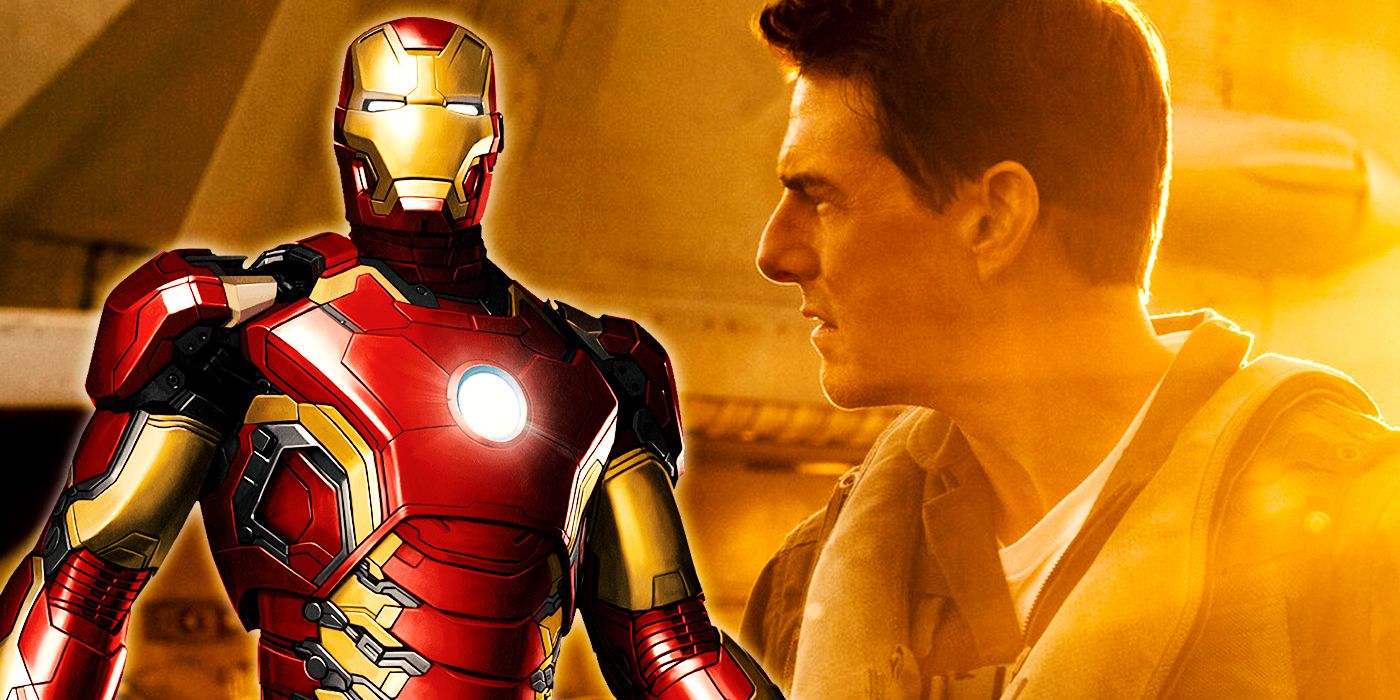
Fox's Iron Man Could've Launched a 1990s MCU
In the days before hit Marvel movies, Iron Man languished in Hollywood with Top Gun: Maverick star Tom Cruise favored for the role of Tony Stark.Koepp's draft also attempts to incorporate the traditional mechanical webshooters, demonstrating Peter's scientific acumen. Peter needs them because his organic webbing is uncontrollable, so he crafts a wrist-bracelet to manage his flow of organic goo. The mechanical webshooters actually stuck around until the movie's filming in 2001. They're visible in some behind-the-scenes material, and apparently had to be digitally removed from the footage of the film's cafeteria scene.
One addition to the origin that comics creator John Byrne has railed against has its origin in this draft. Perhaps concerned about making Peter too unlikable, Koepp has the show promoter screw Peter out of his money only seconds before the thief runs past, so Peter's decision not to help is partially out of ego, and partially out of a desire to teach the promoter a lesson. This take is in the finished film, and as Byrne argues, it undermines the lesson Peter learns because the promoter (arguably) is only getting what he deserves.
Those disappointed by the carjacker's death in the movie might be relieved to know he survives in this version. In this draft, however, Spider-Man flings him into a police car's windshield and shatters it. Keeping Ben's killer alive is not only consistent with the source material, but it would've circumvented one of Spider-Man 3's more reviled plot points.
Dr. Otto Octavius Debuts (Without the Poetry)
Overall, Koepp has a superior take on the origin, but the real deviation occurs forty-seven pages into the draft…after Peter's debuted as Spider-Man, after his (off-screen) high school graduation, and after he's moved to the city. During Norman Osborn's second appearance in the story, he tours OsCorp with Harry and they meet Dr. Otto Octavius, who's completed work on Osborn's military contracts. (His work, naturally, involves a metal harness that utilizes four telescoping arms.) Otto's one day away from his fifth anniversary at OsCorp, and to avoid paying Otto the stock options he's owed, Osborn callously fires him on the spot.
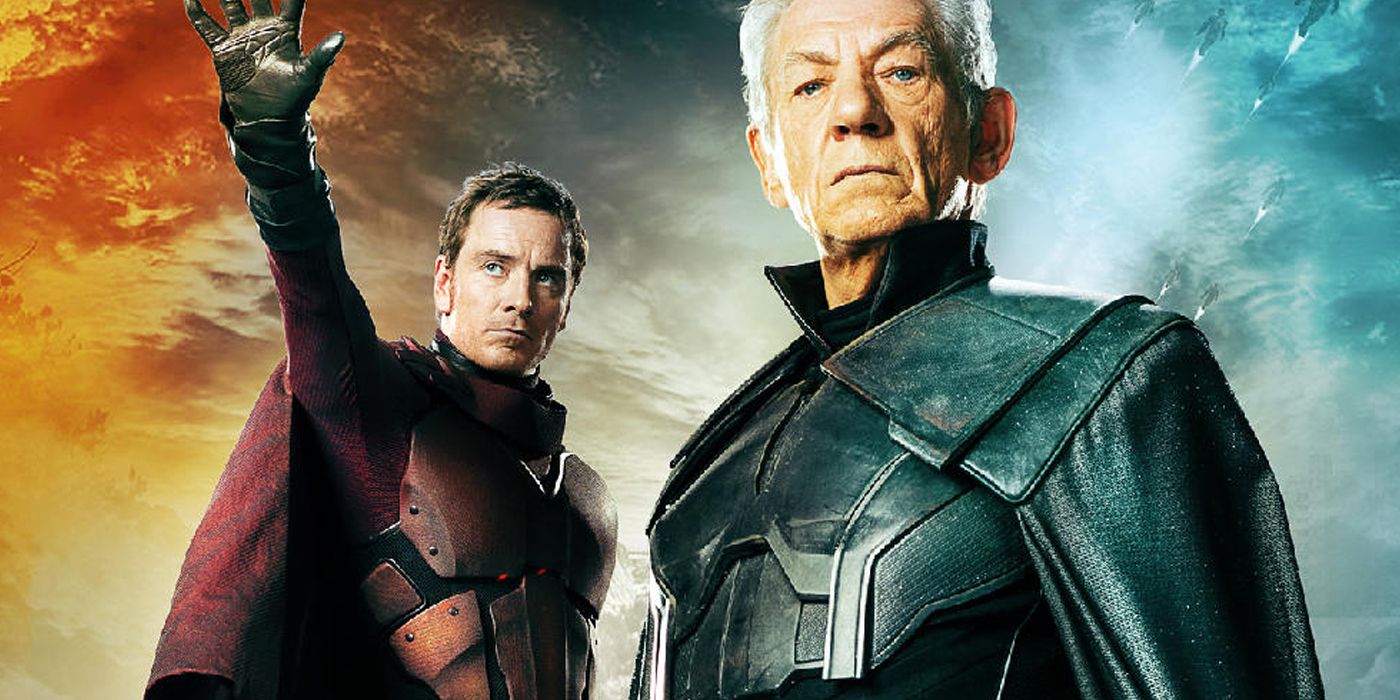
Was the Best X-Men Movie Needlessly Scrapped?
X-Men Origins: Magneto was cannibalized for X-Men First Class, but was the better film lost?Otto reacts violently, causing the release of experimental gas and an explosion that knocks Osborn unconscious…and, oddly, makes his skin briefly transparent. "The green gas hovering over Norman Osborn's motionless body finally dissipates," writes Koepp, "leaving Osborn on the floor, his body no longer transparent. Suddenly, his eyes pop open. Wide open. His blue eyes… have changed color, from their icy azure to a sickly, fluorescent, demonic... ... green!"
The "charred figure" of Dr. Octavius, meanwhile is saved from falling debris by the metallic arms, which seem to have a life of their own. Does Octavius begin his own intricate scheme after escaping the rubble? Not exactly. He disappears for much of the draft.
More time is spent on Peter's personal life, as he runs into MJ in Manhattan, and she still doesn't remember him. Later that same day, he moves in with Harry and discovers MJ and Harry are now a couple. Harry's soon convinced that MJ's secretly in love with Peter, though, and their friendship deteriorates. This plays as soap opera in the film, but it feels darker and heavier in Koepp's draft. As for MJ, she falls for the mysterious Spider-Man, and a scene similar to the "upside down kiss in the rain occurs" when he saves her…only it's snowing in this draft, and Spidey isn't upside down.
The Goblin Attacks
Osborn's motivations are also darker here, as his goal isn't revenge on a military general that ruined his career…instead, the psychotic Goblin voice speaking to Osborn wants him to kill his disappointing son, Harry. This alters the Goblin's debut, as he's targeting Harry and MJ at the annual Macy's Thanksgiving Day parade, as opposed to whatever that street fair in the film is meant to be.
Spider-Man appears to save his friends, and is sliced by a weapon we all associate with the Green Goblin -- a boomerang. Did Koepp envision the Green Goblin in the often-mocked "Power Rangers villain" look from the 2002 film? Possibly. The description goes: "GREEN GOBLIN, clad in form-fitting dark green with a decidedly military look to it. That grotesque, skin-tight helmet is pulled over its face, green mechanical eyes shining brightly through it."
The film's Thanksgiving meal scene has its origins in this draft, although it's not a planned dinner (the characters end up at Harry's place after the parade debacle), and Aunt May isn't present. Osborn discovers Peter's secret similarly, although there's some unnecessary business that has Osborn running tests to confirm that Spidey's blood matches Peter's.
Goblin's feelings about Spider-Man feel a little light in this draft. One scene that's missing is Goblin's rooftop conversation with a woozy Spider-Man, as he tries to tempt Spidey to join forces with him and rule New York. James Cameron wrote a similar scene between Spider-Man and his not-quite-Electro villain in his treatment, and it was resurrected in later drafts in an effort to give Spidey and the Goblin more time together.
One deviation from the film occurs after the Goblin puts Aunt May in the hospital. Realizing that he's only placing his loved ones in danger, and will never be able to tell MJ his secret, Peter quits! He's so committed to quitting, he even burns his Spider-Man costume in May's fireplace.
And what's Dr. Octopus doing during all this drama? He reappears around this time, stalking Aunt May's home in the dark. Does he know Peter's secret? Is this an homage to his relationship with May in the comics? Honestly, it's hard to say. The scene doesn't make a lot of sense.
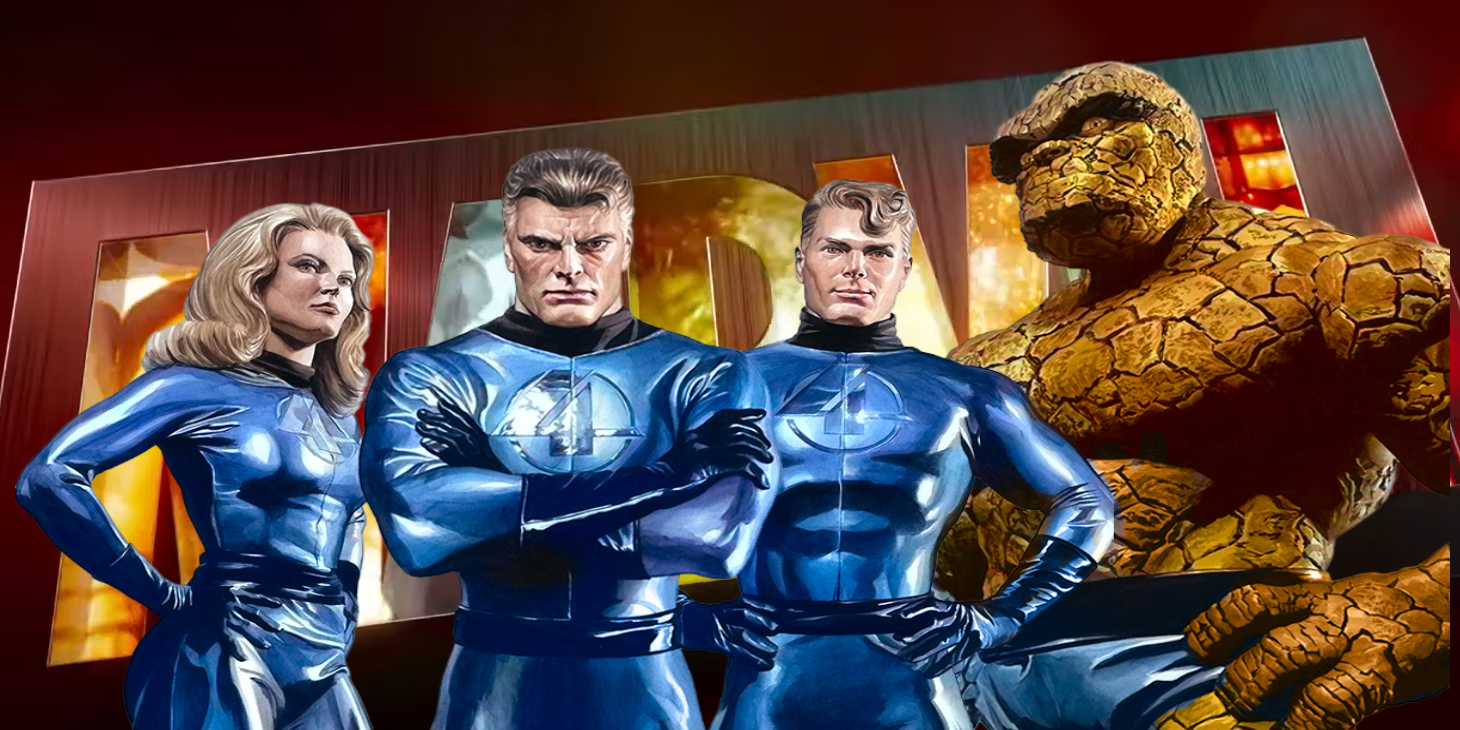
The Wildly Expensive '90s Fantastic Four Film Nixed by Fox
Two Hollywood veterans and Fantastic Four fans attempted a comics-accurate adaptation, but the pitch was too rich for the studio's blood.It is almost time for Ock to reappear in the climax, however. The Goblin arranges for Peter, Harry, and MJ to meet at OsCorp Plaza, setting them up for an ambush. Following a dream conversation with Uncle Ben, however, Peter's rededicated to heroism and ready to face the Goblin. Dr. Octopus emerges, inserting himself into the fight and revealing to the public that Norman Osborn is the sinister Green Goblin.
The action moves to the fictional Manhattan Tower, instead of the Queensboro Bridge, where MJ aids Spidey in defeating the Goblin, there's a passionate kiss between MJ and Spider-Man, and Ock is knocked unconscious (or possibly killed) by one of the Goblin's pumpkin bombs. Later, a media circus surrounds Norman Osborn's upcoming trial, and a furious Harry rages against Spider-Man. Outside the courtroom, Peter contemplates telling MJ his secret, but realizes he can't. "Because I love her, she will never, ever know. … This is my gift…. This is my curse. … I am Spider-Man."
Fan Service
The 2002 film isn't overloaded with specific nods to the source material, so it's surprising to see Koepp included quite a few in his draft. In one scene, Peter asks Ben about his parents, who aren't acknowledged in the actual film. Peter suspects they worked for the government, but Ben will only say, "It was a plane crash, son. Nothing more, and nothing less." Later, when J. Jonah Jameson is introduced, Koepp tells us that there's a framed photograph of a handsome young astronaut on the wall behind him. These aren't ultra-obscure bits, but they're areas of continuity someone would only know in 2000 by doing research on the comics.
There's another nod to the classic material during the climax. When the Goblin attacks, Peter isn't wearing his Spider-Man outfit underneath his clothes. Luckily, across the street, a Broadway souvenir shop is advertising Halloween costumes half-off…and since Spidey's a public sensation, they have plenty in-stock. This is a nod to Amazing Spider-Man #26-27, although it's hard to imagine the hero charging into his film's climactic battle in an ill-fitting suit.
One of the Goblin's more obscure weapons also makes an appearance in the climax. Goblin doses Spider-Man with his psychedelic pumpkin, which causes Spidey to hallucinate a gaggle of Goblins fighting against him. (This would've looked great onscreen.) Stan Lee and John Romita utilized the psychedelic pumpkin bomb in the Spectacular Spider-Man #2 magazine special, which was released during the era of increased psychedelic use amongst young people.
Did We Dodge a Goblin Glider to the Chest?
Rewrites are common in Hollywood, especially on big-budget films. Koepp ultimately kept the screenplay credit, even though Scott Rosenberg did another draft that amped up the action while removing the Dr. Octopus material, and Alvin Sargent was brought in for another rewrite, playing up the Peter/MJ love story. The final screenplay had to accommodate Raimi's vision as the director, and play up Tobey Maquire's strengths as an actor.
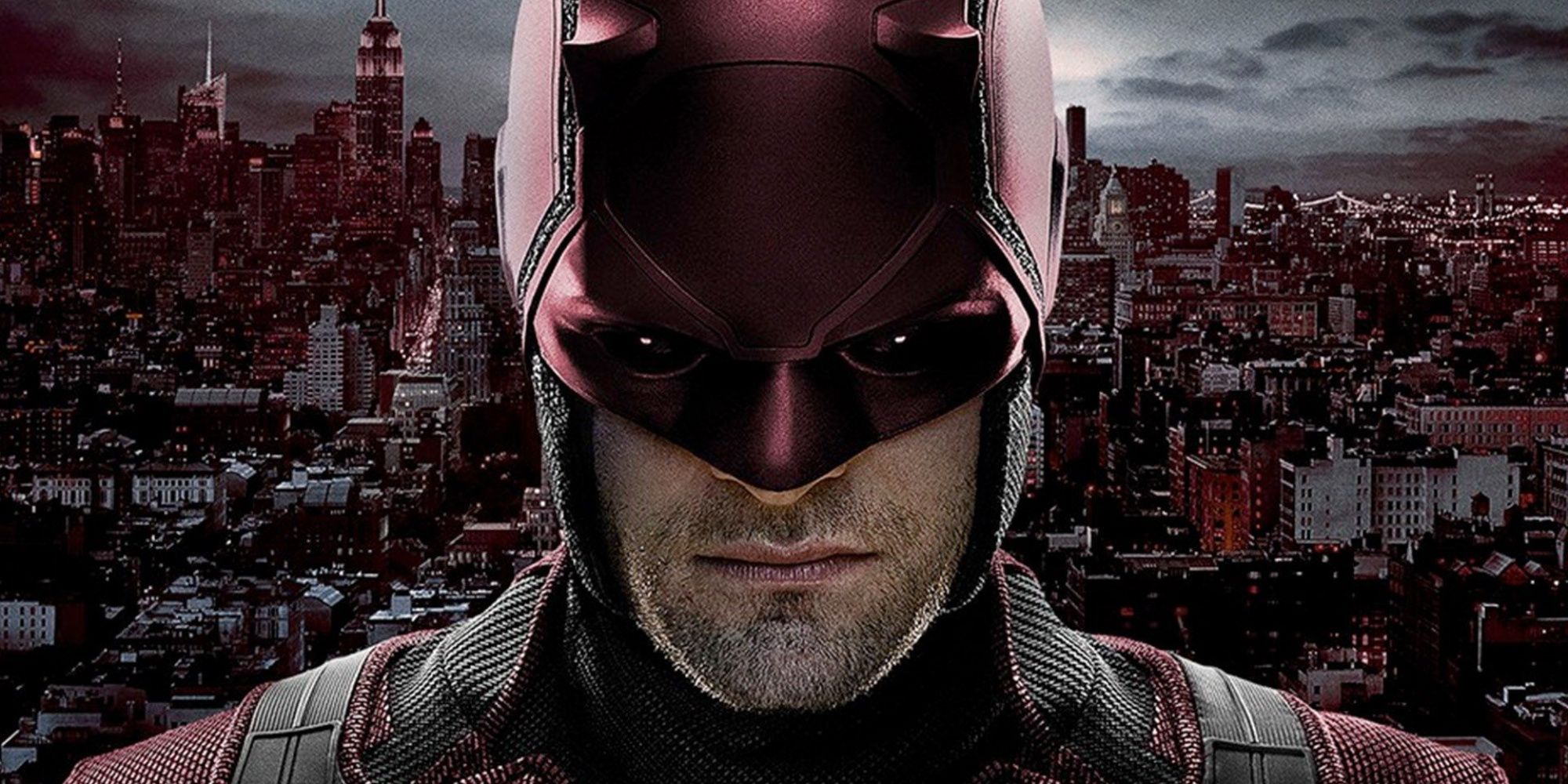
Before Netflix, Before Affleck, There Was the 1990s Daredevil Film
A 1997 Daredevil film script was inspired by the work of Frank Miller, and penned by a well-respected comics scribe. So what happened?Along the way, it was decided that Maquire's Spider-Man would be a vulnerable, solemn hero, always a step removed from those around him, and not the wisecracking everyman hero traditionally seen in the comics. Koepp gives Spidey endless wisecracks, however, so it's amusing to think that the first draft came much closer to getting the character right, only to have his unique personality removed in the rewrites. Additionally, this draft has an organic flow the 2002 film lacks at times (a consequence of the various rewrites).
MJ is also much closer to her comics origins here, even though that might not be particularly flattering to her character. This is the self-obsessed party girl MJ, the one who loves a good time and is pretty oblivious to others' feelings. There's just enough characterization, though, to set her up to evolve in the later films, just as she evolved in the comics. She has far more personality than her 2002 counterpart, who is generically nice and not much else.
The most defensible change is the elimination of Dr. Octopus from the script. He doesn't serve any real purpose, outside of increasing the film's merchandising opportunities. Ever since Batman Returns, Hollywood was convinced superhero films required two villains, so luckily the 2002 film (briefly) ended that fad. Merging the Goblin's origin with Ock's isn't a bad idea, however. It's surprising that none of the drafts merged the Spider-Man and Green Goblin origins, a la 2000's revamped Ultimate Spider-Man origin.
An argument can be made that this draft -- with its sharp dialogue, a villain driven by prolicide, and Spider-Man action that includes him stopping a corrupt cop from beating a teenager senseless with his nightstick -- doesn't match the tone of Raimi's vision. Raimi crafted a world where a character like Spider-Man could exist…not the real world, but something cleaner and far less cynical, a golden New York untouched by modern anxieties. It's hard to tell if the earnestness of 2002 film is sincere or ironic at times, but it is effective in establishing a world for a hero conceived in the more innocent days of 1962.
Novelist Brad Meltzer often cites 2002's Spider-Man when talking about the importance of superheroes in our modern mythology, declaring it the right movie to come along in the days after 9-11. Even though most of the film was shot before the terrorist attacks, Raimi's bright, nearly utopian New York ended up arriving at the perfect time. This particular draft doesn't fit the nostalgic tone Raimi envisioned, and it's easy to imagine some scenes coming across as too harsh in those months after the terrorist attacks. Still, it's frustrating to know that each rewrite brought the script further away from the source material. The filmmakers could present defensible arguments, but did the fans really have to wait so many years for a wisecracking onscreen Spidey?

